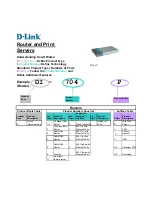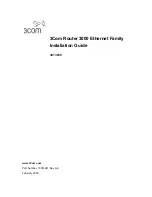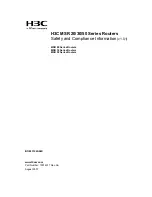
Feed speed too high:
The cutter could be damaged. Cutting quality: Rough
and uneven.
Allow the cutter to come to a complete standstill
before removing the workpiece or putting down
the router.
6.5 Routing in stages
Depending on the hardness of the material you wish
to cut and the cutting depth, it may be a good idea to
proceed in stages.
If you wish to route in several stages, turn the
end stop revolver (14) after you have set the
cutting depth as described in point 6.3 so that the
depth stop (10) is over the highest end stop (15).
Now route in this setting. After completing the
first routing operation, adjust the end stop
revolver (14) so that the depth stop (19) is above
middle end stop (15). Now complete a routing
operation in this setting as well.
Now set the lowest end stop (15) and finish the
routing.
6.6 Routing circles with the compass point (13)
Proceed as follows to route circles around a centre
point:
Fit and adjust the compass point (13) as
described in point 5.3.
Place the compass point (13) on the centre point
of the circle you wish to route and apply pressure
to it.
Complete the routing operation as described in
point 6.4.
6.7 Routing with the parallel stop (21)
Proceed as follows to route along a straight outer
edge of a workpiece:
Fit the parallel stop (21) as described in point
5.2.
Guide the parallel stop (21) along the outer edge
of the workpiece.
Complete the routing operation as described in
point 6.4.
6.8 Free-hand routing
The router can also be operated without any guide
rods. You can use it for freehand routing for creative
work such as the production of logos.
Use a very flat cutter setting for this purpose.
Check the direction in which the cutter is turning
as you machine the workpiece (Fig. 18).
6.9 Shape and edge cutting (Fig. 19)
Special cutters with a guide ring may be used for
cutting shapes (a) and edges (b).
Fit the cutter.
Carefully guide the machine on to the workpiece.
Guide the guide journal or ball bearing (c) along
the workpiece with gentle pressure.
Important:
For deep cuts, carry out the work in several steps
according to the material in question.
Hold the router in two hands when carrying out
all cutting work.
7. Replacing the power cable
If the power cable for this equipment is damaged, it
must be replaced by the manufacturer or its after-
sales service or similarly trained personnel to avoid
danger.
8. Cleaning, maintenance and ordering
of spare parts
Always pull out the mains power plug before starting
any cleaning work.
8.1 Cleaning
Keep all safety devices, air vents and the motor
housing free of dirt and dust as far as possible.
Wipe the equipment with a clean cloth or blow it
with compressed air at low pressure.
We recommend that you clean the device
immediately each time you have finished using it.
Clean the equipment regularly with a moist cloth
and some soft soap. Do not use cleaning agents
or solvents; these could attack the plastic parts
of the equipment. Ensure that no water can seep
into the device.
8.2 Carbon brushes
In case of excessive sparking, have the carbon
brushes checked only by a qualified electrician.
Important! The carbon brushes should not be rep
laced by anyone but a qualified electrician.
8.3 Maintenance
There are no parts inside the equipment which
require additional maintenance.
16
GB
Anleitung E-OF 1200_SPK7:_ 15.01.2008 13:32 Uhr Seite 16
















































